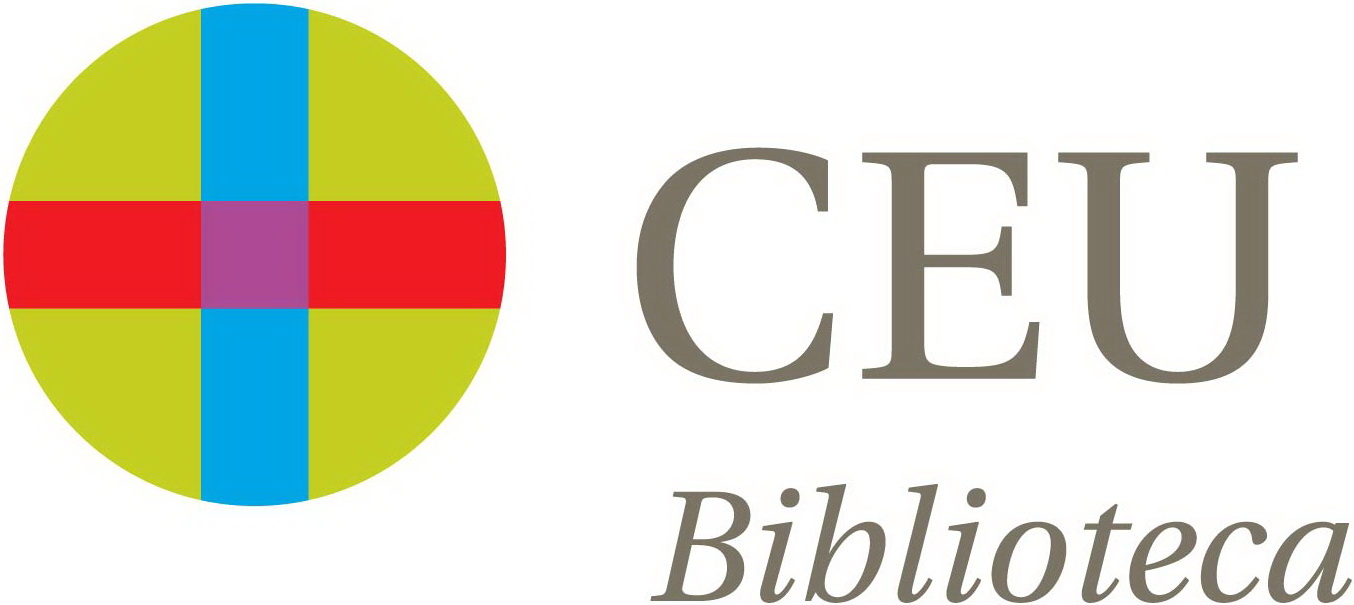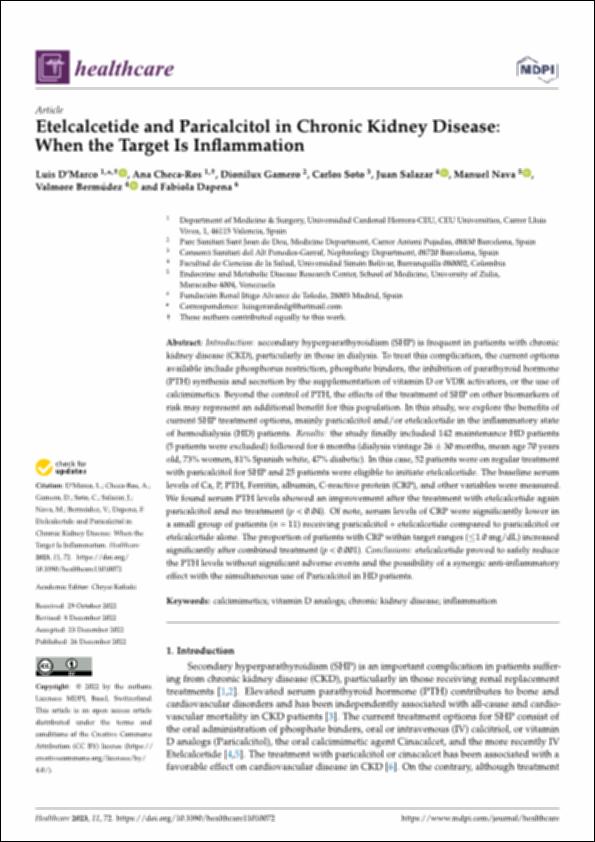Please use this identifier to cite or link to this item:
http://hdl.handle.net/10637/16164Etelcalcetide and Paricalcitol in Chronic Kidney Disease: when the target is inflammation
| Title: | Etelcalcetide and Paricalcitol in Chronic Kidney Disease: when the target is inflammation |
| Authors : | D'Marco Gascón, Luis Gerardo Checa Ros, Ana Gamero, Dionilux Soto, Carlos Salazar, Juan Nava, Manuel Bermúdez, Valmore Dapena, Fabiola |
| Keywords: | Enfermedad; Diseases; Aparato urinario; Urinary system; Paratiroides; Parathyroid; Tratamiento médico; Medical treatment; Etelcalcetide; Paricalcitol |
| Publisher: | MDPI |
| Citation: | D'Marco, L., Checa-Ros, A., Gamero, D., Soto, C., Salazar, J., Nava, M., Bermúdez, V. & Dapena, F. (2023). Etelcalcetide and Paricalcitol in Chronic Kidney Disease: when the target is inflammation. Healthcare, vol. 11, i. 1, art. 72 (26 dec. 2022). DOI: https://doi.org/10.3390/healthcare11010072 |
| Abstract: | Introduction: Secondary hyperparathyroidism (SHP) is frequent in patients with chronic kidney disease (CKD), particularly in those in dialysis. To treat this complication, the current options available include phosphorus restriction, phosphate binders, the inhibition of parathyroid hormone (PTH) synthesis and secretion by the supplementation of vitamin D or VDR activators, or the use of calcimimetics. Beyond the control of PTH, the effects of the treatment of SHP on other biomarkers of risk may represent an additional benefit for this population. In this study, we explore the benefits of current SHP treatment options, mainly paricalcitol and/or etelcalcetide in the inflammatory state of hemodialysis (HD) patients. Results: the study finally included 142 maintenance HD patients (5 patients were excluded) followed for 6 months (dialysis vintage 26 ± 30 months, mean age 70 years old, 73% women, 81% Spanish white, 47% diabetic). In this case, 52 patients were on regular treatment with paricalcitol for SHP and 25 patients were eligible to initiate etelcalcetide. The baseline serum levels of Ca, P, PTH, Ferritin, albumin, C-reactive protein (CRP), and other variables were measured. We found serum PTH levels showed an improvement after the treatment with etelcalcetide again paricalcitol and no treatment (p < 0.04). Of note, serum levels of CRP were significantly lower in a small group of patients (n = 11) receiving paricalcitol + etelcalcetide compared to paricalcitol or etelcalcetide alone. The proportion of patients with CRP within target ranges (≤1.0 mg/dL) increased significantly after combined treatment (p < 0.001). Conclusions: etelcalcetide proved to safely reduce the PTH levels without significant adverse events and the possibility of a synergic anti-inflammatory effect with the simultaneous use of Paricalcitol in HD patients. |
| Description: | Este artículo pertenece al número especial "Exploring the Link between Cardiorenal and Metabolic Diseases". |
| URI: | http://hdl.handle.net/10637/16164 |
| Rights : | http://creativecommons.org/licenses/by/4.0/deed.es Open Access |
| ISSN: | 2227-9032 (Electrónico) |
| Issue Date: | 26-Jan-2023 |
| Center : | Universidad Cardenal Herrera-CEU |
| Appears in Collections: | Dpto. Medicina y Cirugía |
Items in DSpace are protected by copyright, with all rights reserved, unless otherwise indicated.


